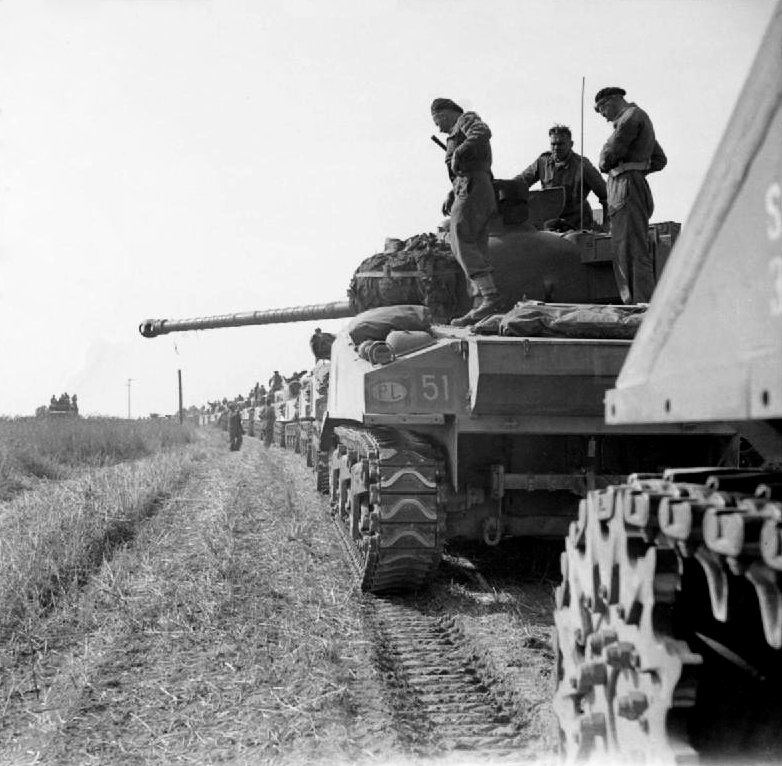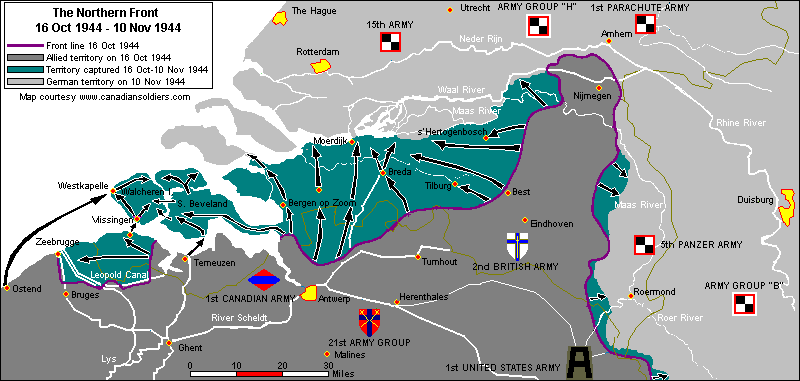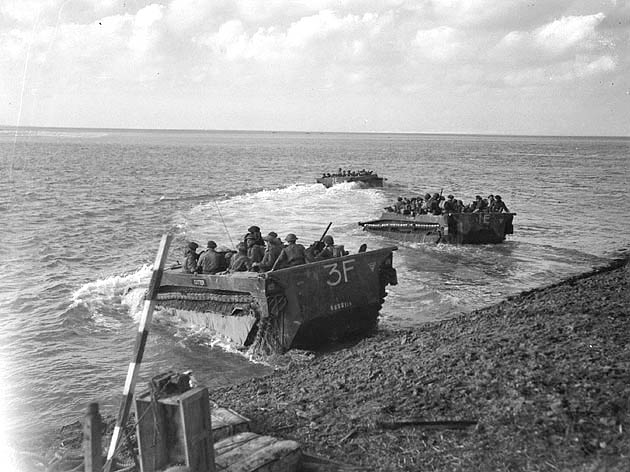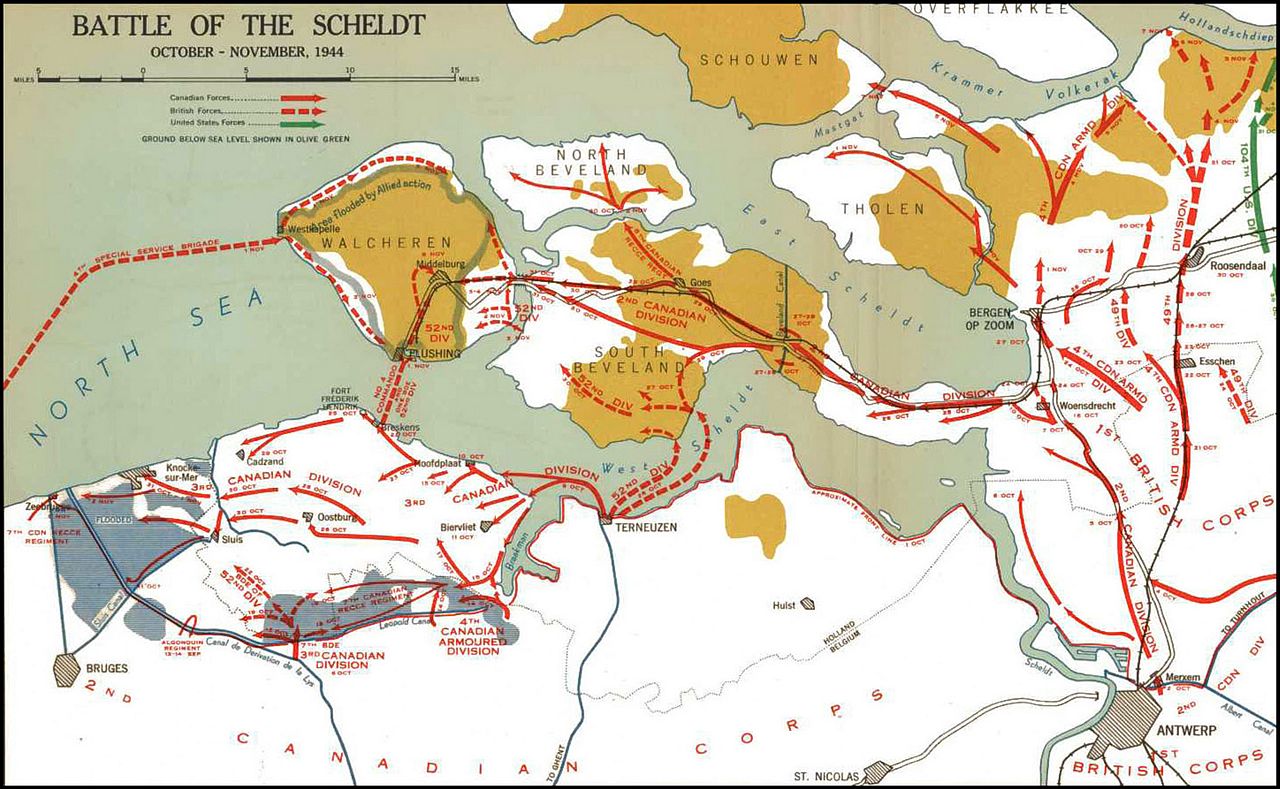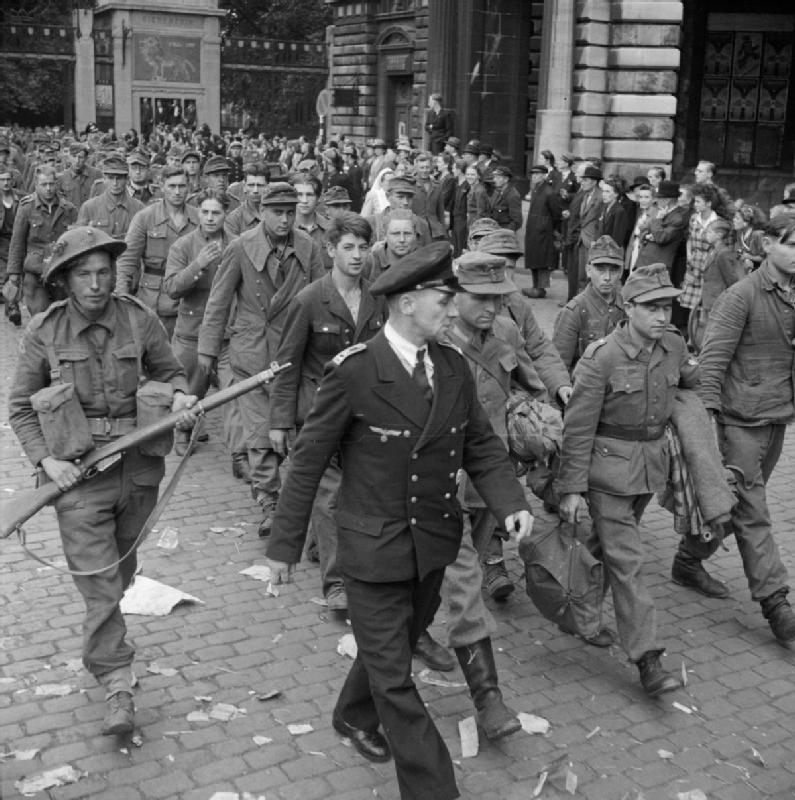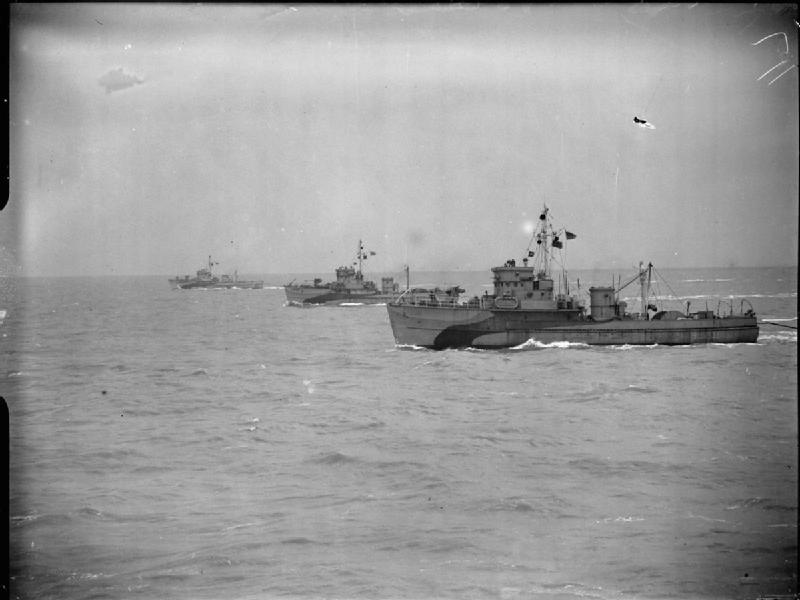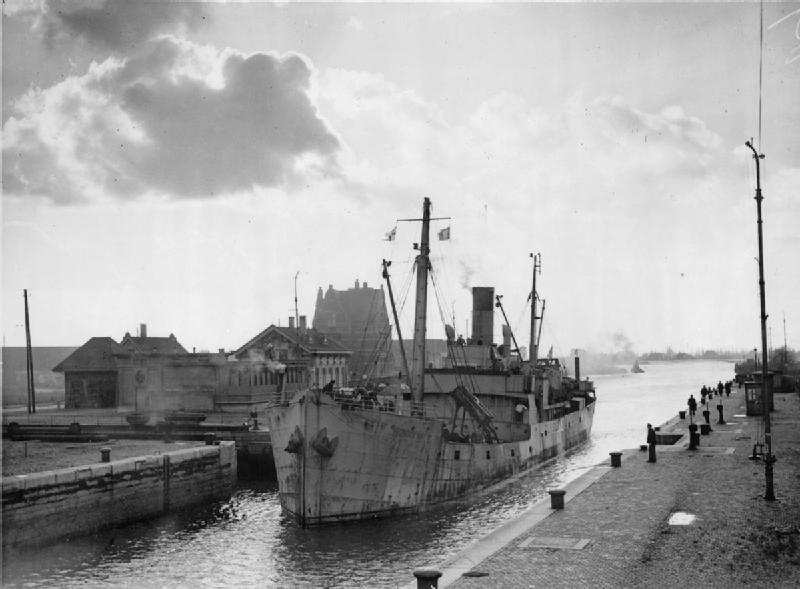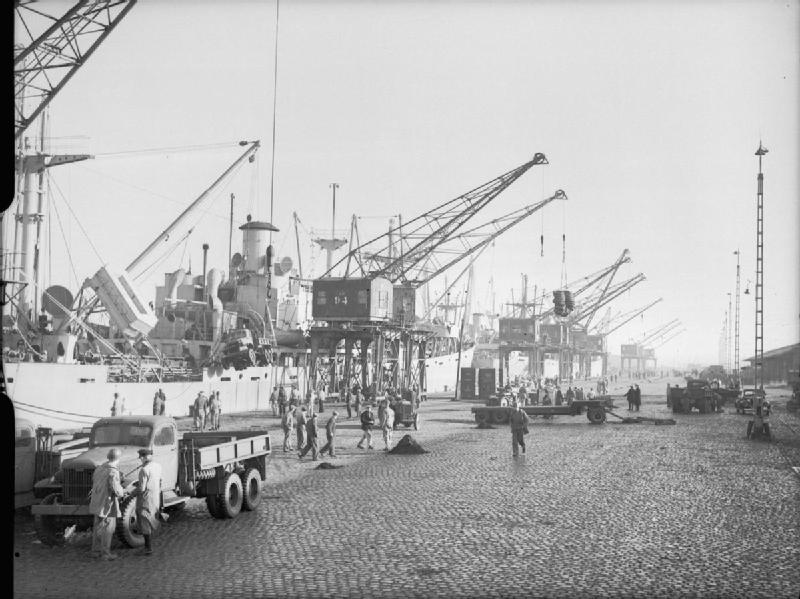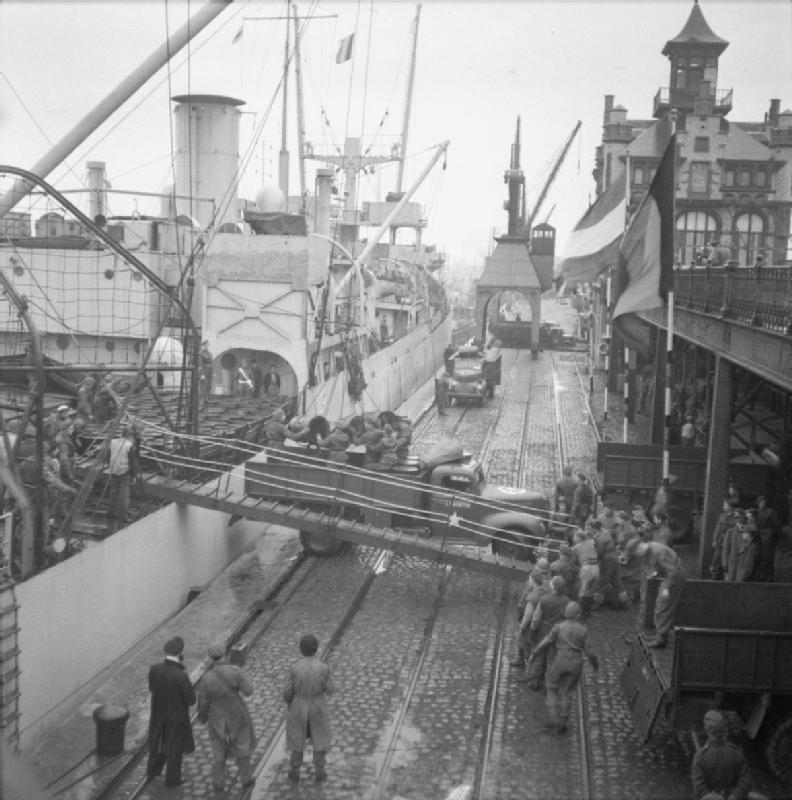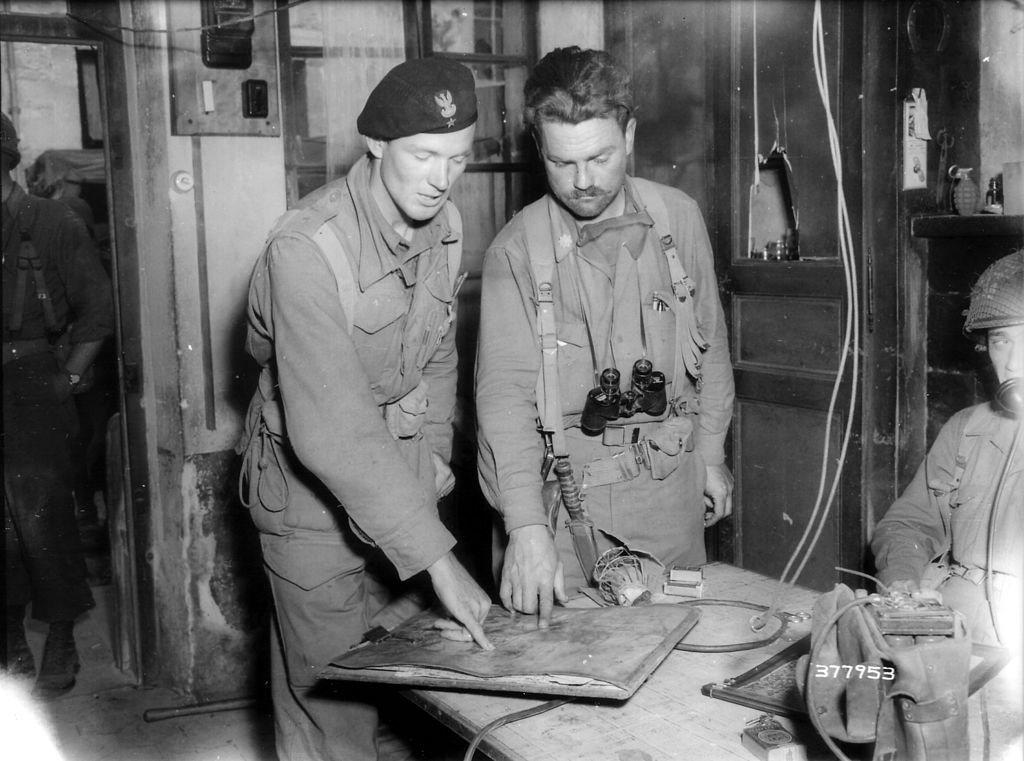Below we present a story by the Dutch amateur historian Jaap Geensen, who is very interested in the World War II. “Polish success underexposed” is a supplement to his “Axel 1944 -2014. We remember“ and shows liberation of Zealand by Poles (autumn 1944) in a broader perspective. According to Jaap Geensen success of the 1st Polish Armoured Division, which was instrumental for establishing an important supply route for military transport on the river Scheldt and getting Antwerp, an important Allied supply port, has been unfairly overshadowed by exagerrated in publicity the Operation “Market Garden”. We wish to thank Mr. Geensen for his comments.
POLISH SUCCESS UNDEREXPOSED AND UNDERRATED
By Jaap Geensen
With the liberation of the east part of Sealandian-Flanders on September 20, 1944 the 1st Polish Armoured Division booked a great result.
1st Polish Armoured Division
To emphasize the importance of it one needs to understand the situation of the Allied armies in Western Europe, at that time. In the east, the Americans ran aground near the German border and the Siegfried Line. The same problem for the British who fought in the north on the left flank of the Americans.
On the north side, the hope was on what the break through (to Berlin) near Arnhem should be – Operation “Market Garden”. Unfortunately “Market Garden” turned soon to be a great fiasco whit a high cost in human losses and energy without any gains yielded.
Note:
A big oppo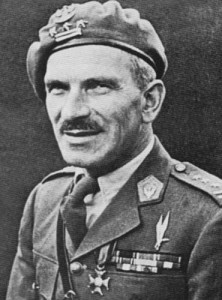 nent of the operation was Polish General Stanisław Sosabowski, commander of the 1st Independent Parachute Brigade whom English war authorities blamed for the operation failure. At their request, gen. Sosabowski stripped of the command over 1 of IPB. After the war he worked as a simply worker in some factories. His merits has been appreciated by the Dutch, who in 2006 (posthumously) awarded him the Bronze Lion – a very high royal military decoration. (The Dutch were very outraged by the way the British treated the Polish general.) [rg]
nent of the operation was Polish General Stanisław Sosabowski, commander of the 1st Independent Parachute Brigade whom English war authorities blamed for the operation failure. At their request, gen. Sosabowski stripped of the command over 1 of IPB. After the war he worked as a simply worker in some factories. His merits has been appreciated by the Dutch, who in 2006 (posthumously) awarded him the Bronze Lion – a very high royal military decoration. (The Dutch were very outraged by the way the British treated the Polish general.) [rg]
Bronze Lion for General Sosabowski – www.polenforum.nl.
The Canadian 1st Army had approached close to the border with West Zeeland and prepared themselves to advance (like the Poles did) to the south bank of the Western-Scheldt. A number of ports along the French-Belgian coast were equipped by the Germans as a “Festung” and thus temporarily “left aside” by the Canadians.
Northern front October 16 – November 10, 1944
A problem for the armies at that time was the long supply routes. Supplies came sparsely through from the improvised ports in Normandy. So there was a shortage of ammunition, fuel, etc. Europe’s second largest port (Antwerp) was in the hands of the English, but unusable because the waterway to it, the Western-Scheldt, was still controlled by the Germans.
The defensive gap the G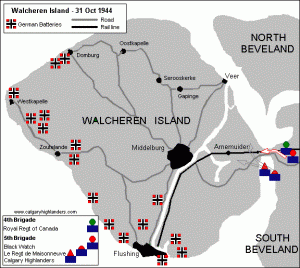 erman 712th Infantry Division had left in West Zeeland (read also: Axel 1944 – 2014. Remebered) was already filled by the 64th Infantry Division. West Sealandian-Flanders, and the adjacent part of Belgium were declared by “Supreme Command in Berlin” to be the “Festung Schelde Süd”. The island of Walcheren north of the river Scheldt became “Festung Walcheren”. This did not mean extra weapons or reinforcements were sent in, but a: no surrender and fight to the last man. Furthermore also they threatened actions against relatives in Germany, so a retreat or becoming prisoners of war, was no option.
erman 712th Infantry Division had left in West Zeeland (read also: Axel 1944 – 2014. Remebered) was already filled by the 64th Infantry Division. West Sealandian-Flanders, and the adjacent part of Belgium were declared by “Supreme Command in Berlin” to be the “Festung Schelde Süd”. The island of Walcheren north of the river Scheldt became “Festung Walcheren”. This did not mean extra weapons or reinforcements were sent in, but a: no surrender and fight to the last man. Furthermore also they threatened actions against relatives in Germany, so a retreat or becoming prisoners of war, was no option.
The Canadians in the West had a very hard time against those Germans who largely hide themselves behind inundations. On October 9, they had not made much progress. Despite heavy artillery shelling and extensive air support. At that moment the high value of the success of the Poles was proved because an amphibious landing over the Braakman an arm of the sea, west of the liberated city Terneuzen, was carried out.
Across the Scheldt River
Near Hoofdplaat (Walcheren Island) the Germans were attacked in their back and although the firing went on until November 2 when the last bullet was fired, this landing meant yet the “beginning of the end”. From the East the German defence was systematically dismantled. Finally the south bank of the Scheldt was free!
Battle of the Scheldt
Also on the northern bank every effort was made to expel the Germans. From Antwerp on was the battle northward fought and via Hoogerheide the semi island South Beveland was attacked. Progress was rather slowly. When the troops had advanced westward to the canal through South Beveland, again from liberated East Sealandian-Flanders , there was a successful breakthrough on October 26 from Terneuzen by an amphibious landing to Baarland. For the second time the Germans were attacked in the back from East Sealandian-Flanders and as a result, the Sloedam was reached. By November 8, the last Germans on Walcheren surrendered.
German prisoners in Antwerp (September 5th, 1944)
Demining of the Scheldt lasted until November 26…
British minesweepers sweeping abreast in the Scheldt estuary
…and on 28 November, the first convoy of 18 freighters arrived in Antwerp, carrying on 180 000 tons of cargo!
The first coaster entering Antwerp docks
Ships unloading at Antwerp, November 1944
On December 16, the Germans made a desperate attempt to recapture Antwerp,but after 100 km they got stuck due to a lack of fuel (this was The Battle of the Bulge or the Ardennes Offensive).
Oil being unloaded from the SS Fort Cataraqui, Antwerp November 1944
How different could this have ended if the allies at that moment also would have suffered from a supply problem? The apparently not so important success of the rapid conquest of East Sealandian-Flanders by the Polish troops definitely has been a great factor in the conquest of the important port of Antwerp. Antwerp, of vital importance to the allies in their efforts to bring Nazi-Germany on its knees.
Officer of the 1st Polish Armoured Division (on the left)
Jaap Geensen
Read also: Axel 1944 – 2014. Remembered, Protecting The King of Hollywood, Wreck in the IJsselmeer
About the author:
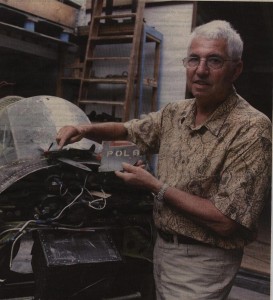 Jaap Geensen is an amateur-historian and archelogist. He is especially interested in the local history and has published several articles about Zeeuws-Vlaanderen during the second world war. He was born there and returned after he retired.
Jaap Geensen is an amateur-historian and archelogist. He is especially interested in the local history and has published several articles about Zeeuws-Vlaanderen during the second world war. He was born there and returned after he retired.
Photo: Wikipedia, Jaap Geensen archive

